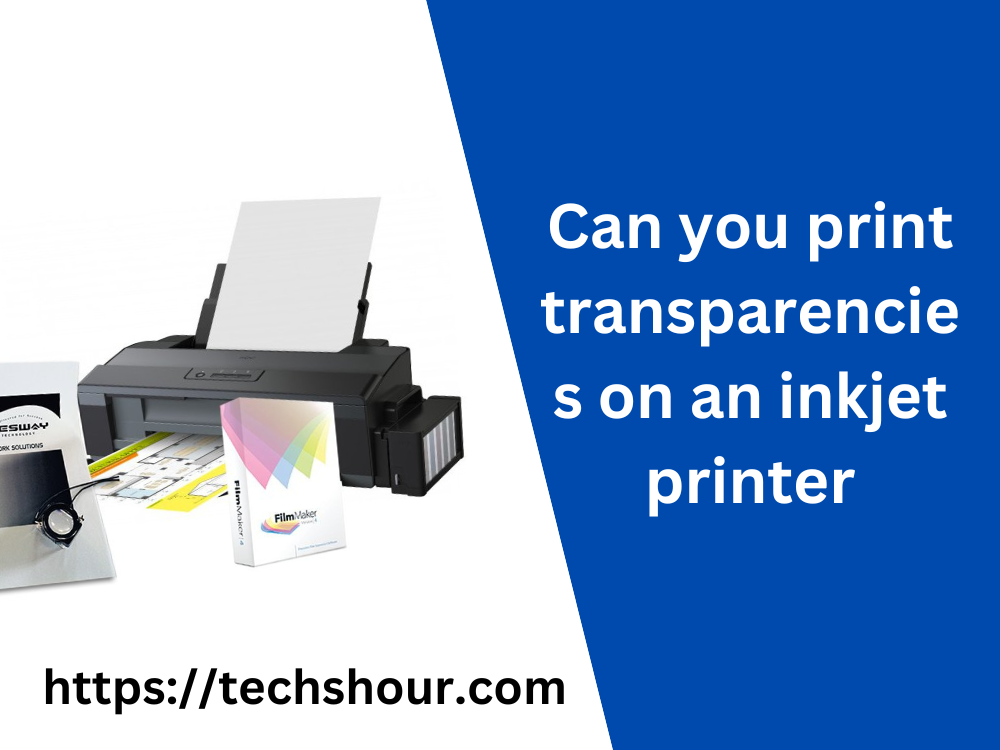Can you print transparencies on an inkjet printer
Printing transparencies can be a useful way to create high-quality images for a range of purposes, such as presentations or screen printing. However, if you’re using an inkjet printer, you may be wondering if it’s possible to print transparencies on it. In this article, we will explore the topic of printing transparencies on an inkjet printer in a people-first how-to style.
Printing transparencies on an inkjet printer can be a bit tricky, as these printers are not specifically designed for this purpose. However, with the right materials and techniques, it is possible to achieve high-quality results. In this article, we will provide a step-by-step guide on how to print transparencies on an inkjet printer.
Table of Contents
Materials Required
Before you start printing transparencies on an inkjet printer, you will need to gather the necessary materials. Here is a list of the items you will need:
- Inkjet Printer
- Transparency Film
- Computer
- Image Editing Software (e.g., Adobe Photoshop)
- Printer Driver Software
Step 1: Prepare the Image
The first step in printing transparencies on an inkjet printer is to prepare the image that you want to print. This can be done using image editing software, such as Adobe Photoshop. Make sure that the image is the correct size and resolution for the printer, and that it is in the appropriate file format (e.g., JPEG or PNG). It is also a good idea to adjust the brightness and contrast of the image to ensure that it will look clear when printed on the transparency film.
Step 2: Load the Transparency
Film Once you have prepared the image, the next step is to load the transparency film into the printer. Make sure that the film is compatible with your printer and that it is loaded correctly. Follow the instructions provided with the transparency film to ensure that it is inserted in the correct orientation and that it is secured in place.
Step 3: Adjust Printer Settings
Before printing the image on the transparency film, you will need to adjust the printer settings to ensure that it will print correctly. Open the printer driver software and select the appropriate settings for printing on transparency film. These settings may include adjusting the print quality, selecting the appropriate paper type, and choosing the correct ink settings.
Step 4: Print the Image
Once you have adjusted the printer settings, you can now print the image on the transparency film. Make sure that the printer is properly connected to the computer and that it is turned on. Click the print button in the image editing software and wait for the printer to finish printing.
Step 5: Allow the Ink to Dry
After printing the image on the transparency film, it is important to allow the ink to dry completely before handling the film. This can take several minutes, depending on the type of ink used and the humidity in the room. Avoid touching the ink with your fingers, as this can cause smudging or smearing.
Frequently Asked Questions
Can I print transparencies on any inkjet printer?
Not all inkjet printers are designed to print on transparency film. It is important to check the printer’s specifications before attempting to print on transparency film.
What type of transparency film should I use?
The type of transparency film you should use will depend on the printer you are using and the type of ink you have. It is important to choose a film that is compatible with your printer and ink.
How do I know if the ink is dry?
The ink should be dry to the touch before handling the transparency film. You can check the ink by lightly touching it with a clean, dry finger.
Conclusion
Printing transparencies on an ink jet printer can be a bit tricky, but with the right materials and techniques, it is possible to achieve high-quality results. By following the steps outlined in this article, you can print your own transparencies for a range of purposes, such as presentations or screen printing. Remember to take the time to prepare your image correctly, load the transparency film properly, adjust the printer settings, and allow the ink to dry before handling the film. With a bit of practice, you’ll be able to produce high-quality transparencies that meet your needs.






